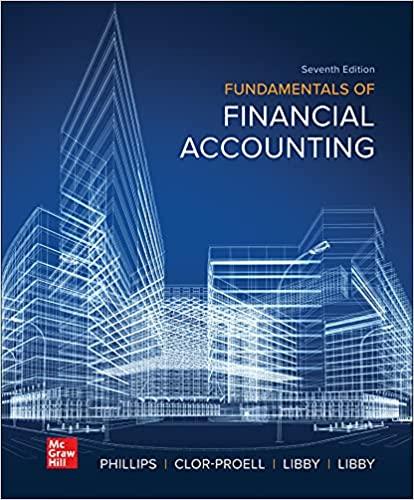Question
Exercise 14.27 John Gold has owned and operated Heritage Jewellery Store for a number of years. He uses the standard mark-up of 300 per cent
Exercise 14.27
John Gold has owned and operated Heritage Jewellery Store for a number of years. He uses the standard mark-up of 300 per cent (known as a triple key in this industry) and uses an average cost that includes an allocation of overhead as the cost base. Lately, jewellery sales at the store have faltered as the country faces a recession. John's son is taking a cost accounting course and suggests that his father should use a pricing formula based on the price elasticity of demand.
Required
(a)Provide a plausible explanation for John's current use of cost-based pricing.
(b)Explain elasticity to John in simple terms.
(c)Explain how price changes affect demand for products that are highly elastic.
(d)Explain why John's price elasticity of demand cannot be predicted with certainty.
(e)List possible reasons why a product's price elasticity of demand would change. List as many reasons as you can.
(f)Explain how changes in the economy affect prices. Give examples from the current business environment.
Exercise 1.22
Australian fashion designer Sean Ashby commenced his men's swimwear and clothing business aussieBum in 2001. A keen swimmer and surfer, he was unable to find a good pair of men's cossies and used his life savings of $20 000 to make a series of prototypes, buy materials and commence manufacturing in Australia. Despite rejection from local retailers who did not see the potential for aussieBum to compete with international brands, Ashby has proven critics wrong. He had no choice but to take his business online, with instant exposure to the international market. It now takes thousands of orders a day.
Since the company's inception, Ashby says that aussieBum has 'taken on its own little cult revolution', with celebrities such as Ewan McGregor, Billy Connolly and David Beckham fans of the aussieBum brand. Even Kylie Minogue's male dancers wore aussieBum cossies in the film clip for her song 'Slow'. The marketing thrust behind Ashby's aussieBum is to live the dream 'the dream to be independent and present our gear in a way that gets noticed. We don't apologise for pushing the boundaries . . . We have a saying at aussieBum If you doubt yourself, wear something else'.
The company doubled in size every year in its first five years and continued to grow by 20 per cent every quarter. By 2005, aussieBum earned more than $5 million in sales and carried no debt. The aussieBum brand now takes pride of place in stores such as Selfridges in the UK; Brown Thomas in Ireland; La Maison Stores in Canada; Alpha Male in Melrose Drive, Los Angeles; KaDeWa in Germany; as well as others in Spain, The Netherlands, Sweden, Poland and Russia. As well as direct department store sales, aussieBum's internet retail orders are booming, with aussieBum being distributed to more than 70 countries. It now has over 200 000 consumers ordering direct via its custom built e-commerce site.
Most of the raw materials are sourced from Italy and China. By manufacturing in Australia, aussieBum hopes to promote Australia's culture and relaxed lifestyle as well as eliminate restrictions that might come with outsourcing production to other countries. Moreover, producing locally (through independent manufacturers) provides flexibility and a reduced timeframe in getting new products to market. With a heavy emphasis on innovative product design, aussieBum pays close attention to the design phase of the product process.
Two recent examples of aussieBum's flexibility and innovative approach to product development and marketing are worthy of note. First, it was able to capitalise on the consumer backlash against competitor Bonds when that company transferred more of its manufacturing offshore. Ashby estimates that aussieBum's sales grew by at least 40 per cent as a result. Second, aussieBum was able to achieve continued growth during the global financial crisis. The company continues to avoid debt and own all its assets outright.
Required
(b) Illustrate and describe the industry and organisational value chain in which aussieBum operates.
(c) Classify aussieBum's likely strategy as low cost or product differentiation. Explain.
Exercise 16.17
Mersey Company's industrial photo-finishing division, Vale, incurred the following costs and expenses in the last period.
Variable
Fixed
Direct materials
$200,000
Direct labour
150,000
Factory overhead
70,000
$42,000
General, selling and administrative
30,000
48,000
Totals
$450,000
$90,000
During the period, Vale produced 300,000 units of industrial photo prints, which were sold for $2 each. Mersey's investment in Vale was $500,000 and $700,000 at the beginning and ending of the year, respectively. Vale's weighted average cost of capital is 15 per cent.
Required
(a)Determine Vale's return on investment for the year.
(b)Compute Vale's residual income (loss) for the year.
(c)How many industrial photo print units did Vale have to sell during the year to break even?
(d)What was Vale's contribution margin for the year?
Step by Step Solution
There are 3 Steps involved in it
Step: 1

Get Instant Access to Expert-Tailored Solutions
See step-by-step solutions with expert insights and AI powered tools for academic success
Step: 2

Step: 3

Ace Your Homework with AI
Get the answers you need in no time with our AI-driven, step-by-step assistance
Get Started


